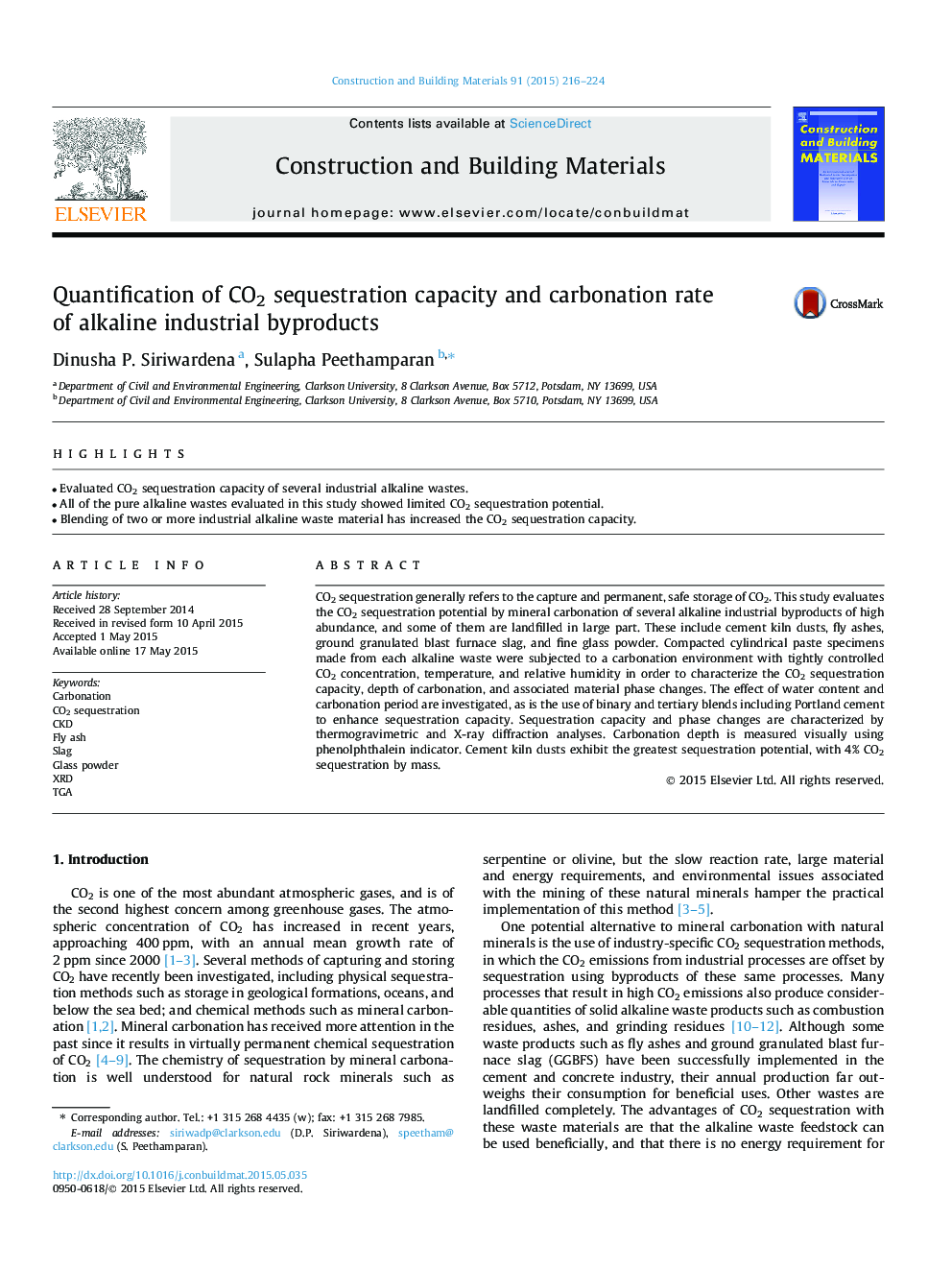| Article ID | Journal | Published Year | Pages | File Type |
|---|---|---|---|---|
| 256885 | Construction and Building Materials | 2015 | 9 Pages |
•Evaluated CO2 sequestration capacity of several industrial alkaline wastes.•All of the pure alkaline wastes evaluated in this study showed limited CO2 sequestration potential.•Blending of two or more industrial alkaline waste material has increased the CO2 sequestration capacity.
CO2 sequestration generally refers to the capture and permanent, safe storage of CO2. This study evaluates the CO2 sequestration potential by mineral carbonation of several alkaline industrial byproducts of high abundance, and some of them are landfilled in large part. These include cement kiln dusts, fly ashes, ground granulated blast furnace slag, and fine glass powder. Compacted cylindrical paste specimens made from each alkaline waste were subjected to a carbonation environment with tightly controlled CO2 concentration, temperature, and relative humidity in order to characterize the CO2 sequestration capacity, depth of carbonation, and associated material phase changes. The effect of water content and carbonation period are investigated, as is the use of binary and tertiary blends including Portland cement to enhance sequestration capacity. Sequestration capacity and phase changes are characterized by thermogravimetric and X-ray diffraction analyses. Carbonation depth is measured visually using phenolphthalein indicator. Cement kiln dusts exhibit the greatest sequestration potential, with 4% CO2 sequestration by mass.
